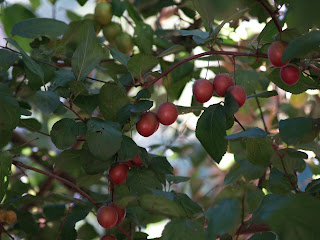Including a healthy amount of greens into your family's diet can prove challenging, but I may have a solution that will help.
First, start off with a baseline dish that allows your kids to figure out what greens taste acceptable all by themselves. I recommend using the recipe attached below because it is quite simple and, at least with bok choy, I haven't met a kid who didn't like it when it was prepared this way.
After bok choy, I would recommend going to collards, then kale, then our new favorite, molokia, then spinach. While I haven't been successful in converting kids to fans of mustard greens nor chard, you may have better luck. Every kid is different.
Once you know which greens are acceptable to your kids, you can then start adding the greens to a multitude of dishes. A handful in their spaghetti, in burger patties, casseroles, meatloaf, lasagna, soups, stews and even breads. If done slowly, your kids aren't likely to rebel against it and in no time at all you will have them eating a serving of cooked greens a day. And they may not even know it. My kids expect that their boxed mac n' cheese will have green specks, and maybe a tomato or green peas to boot.
So, here is the basic recipe. Let me know how it turns out for your family.
Kid Friendly Greens
Servings: 4
Preparation Time: 5 minutes
Start to finish: 2-15 minutes (depending on the green)
Ingredients
4 large bok choy, Cut into 1" pieces (or four cups other greens such as collards, molokhia, spinach, kale, etc.)
1 cup Low sodium broth. Any type will do. (Add slightly more for collards, slightly less for spinach)
Preparation
1. Heat your largest skillet to 300 degrees or medium.
2. When hot, toss in the Bok Choy. Let it wilt a bit and brown lightly.
3. Pour in the broth and allow to simmer until the broth is mostly evaporated.
4. Beware to not let your pan go dry. If the simmer is too fast you can either
turn it down or add a bit of water or broth to the pan.
Nutrition Facts
If using bok choy it gets good marks for the 13 Calories per serving with Zero grams Fat, Sat Fat and Cholesterol, 63 mg Sodium and 6% Potassium with 53% of your Vitamin C, 42% of your Vitamin A and 13% Folic Acid. Other greens will have different nutritional breakouts, but all are very good for you.
Cheers to your health!
Thursday, July 26, 2007
Tuesday, July 24, 2007
All Prunes are Plums; All Plums aren't Prunes.
Who knew that plums could be so interesting? Those cloying globs of sticky laxative and those over-hard, under-sweet purple and red ones at your local grocer show little of what plums are capable of.
There are a few thousand types of plums in the world with nearly 150 cultivated in the US, while only 20 are regularly grown. With just a little bit of information a novice can separate the different varieties into their basic categories.
There is the globular, maroon and purple skinned, red fleshed Japanese Plum.
There is the slightly oblong, somewhat slender, purple skinned and fleshed European Plum.
There is the smaller, round, blue black Damson plum with its only semi-sweet green to golden yellow flesh, tart skin, and technical classification as a different species.
There is the Green Gage and Yellow Gage, that are named by the color of their skin and flesh.
And then there is another kind. One I wouldn't have even realized unless I happened to move into this house. In our yard are two Wild Plum trees. One produces lovely golden plums that are the same size as cherries and another that produces beautiful rose colored drupes that are closer to the diameter of an American quarter. These have delicate skins, juicy, sweet flesh and are about 1/3rd stone. We get two small harvests each year. The first comes early in July, when the golden fruit is ripe. The next is in mid to late August, when the rose fruit is ripe.
While the fruit isn't viable for a commercial product, because of its low yield and small fruits, it could be easy to grow for the home gardener. I haven't done a thing to mine and they are apparently disease free and healthy. The trees grow wild throughout most of the United States (not in the Panhandle and deserts, generally) and many of the trees have been creating their own groves. All you would need are two trees from the same genus (European plus European, Damson plus Damson, etc...) in order to have a few bucketfuls of fruit per year. European plums are the most prolific of all types and the wild ones are the least prolific.
Plums are amazing little powerhouses of nutrition too. They have a particularly potent super-oxide antioxidant that clobbers free-radicals, they help your body increase its absorption of iron and they are a good source of several nutrients. On average, two medium plums will provide you with 60 Calories, Zero Fat, Cholesterol and Sodium, 16 grams of Carbohydrates (6%), 2 grams of Fiber (8%), 228 IU of Vitamin A (10%), 6mg Vitamin C (20%) and 4 mcg Vitamin K (10%). (You can increase the fiber rating by choosing the European plums or prunes.)
And, lastly, you should know that all prunes are dried European plums and have a high sugar content. A dried plum is a plum that is cut in half and dried without the pit. The fruit called prunes are simply the slender European type.
I hope you get a chance to try some tree ripened plums from your local Farmers Market this week. Look out for the different sizes and colors available and find out what is so interesting about them for yourself as well.
Subscribe to:
Comments (Atom)




